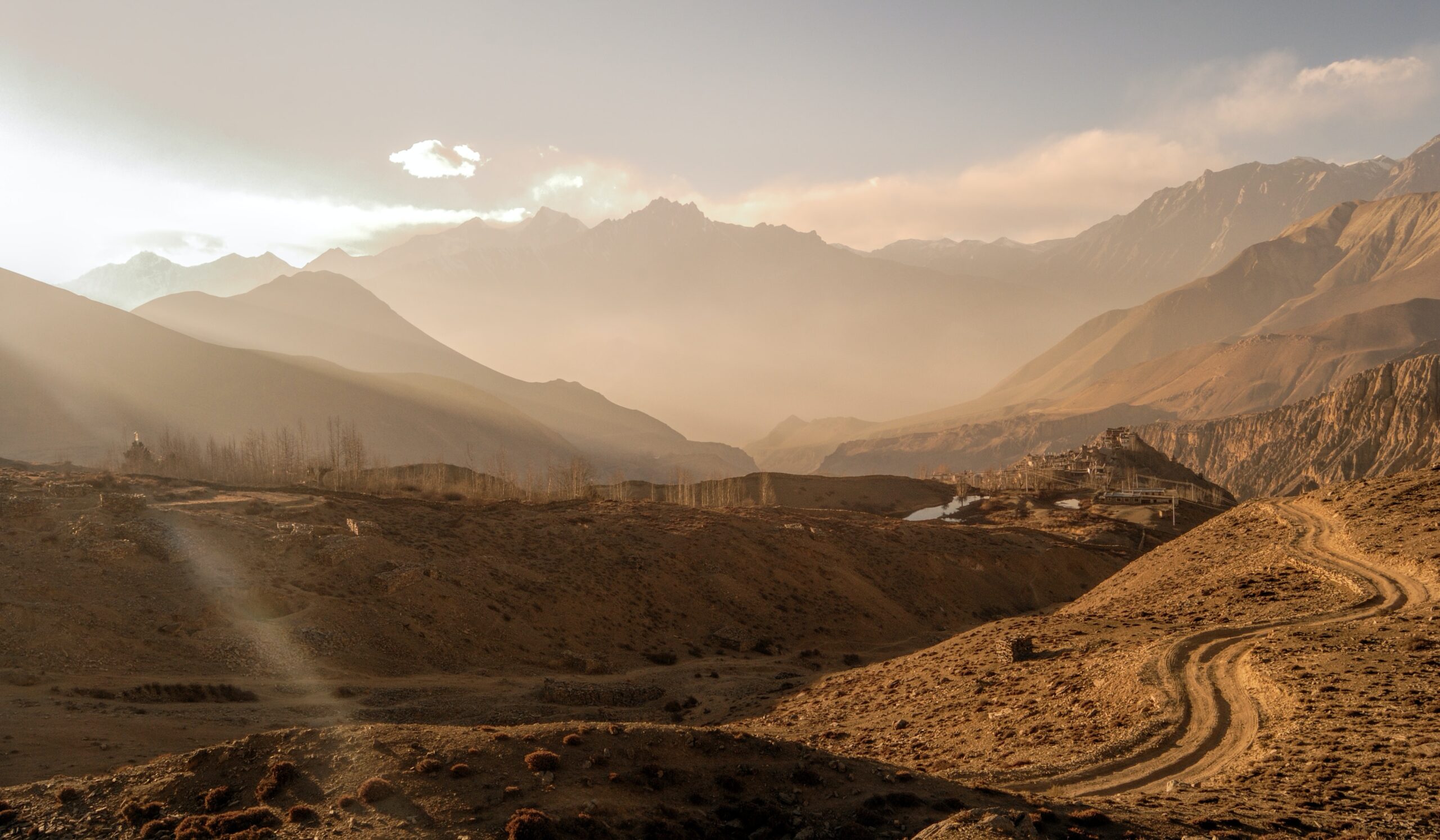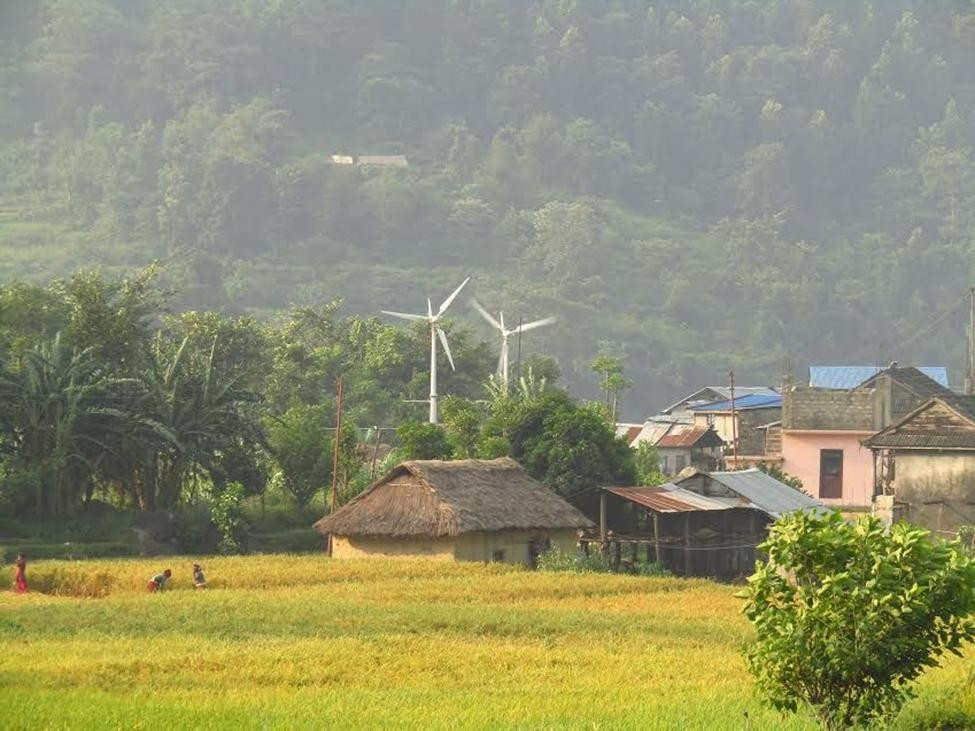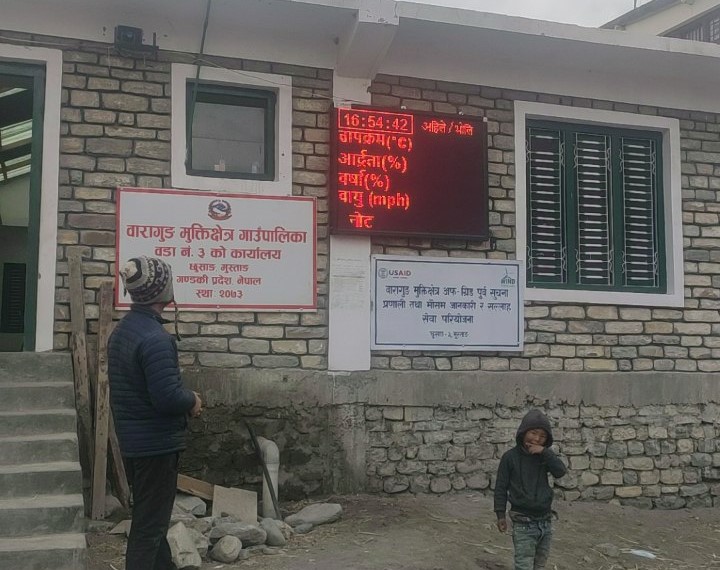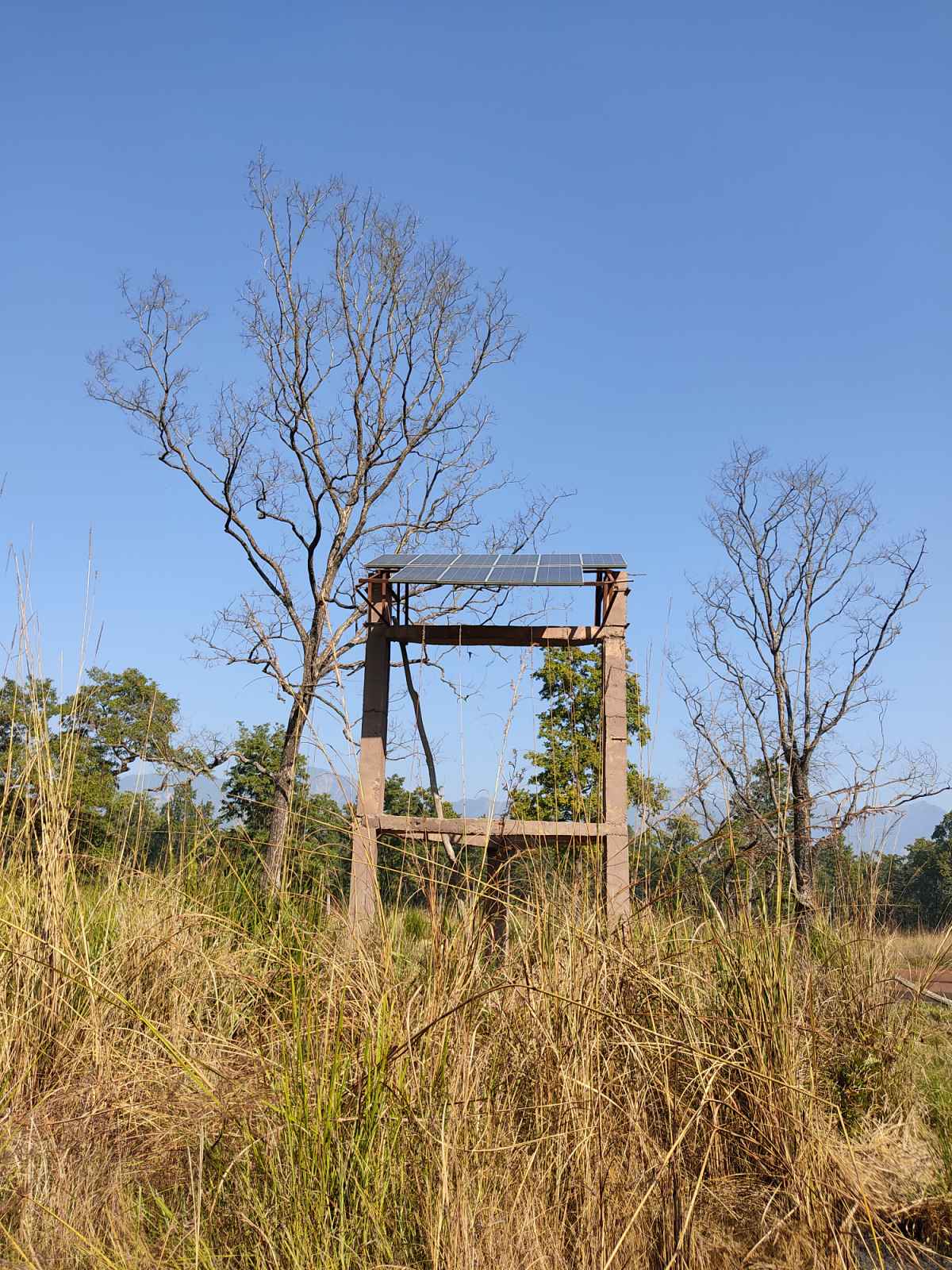
On-grid solar project commonly refers to the project generating electricity from Solar Photovoltaic (PV) system connected to the utility grid. It consists of solar panels, one or more inverters and a grid connection equipment. Since, it does not use batteries, it is cheaper as using them would increases the initial capital and affect the rate in Power Purchase Agreement (PPA).
![]()
Figure 1: Representative image of grid-tied solar project.
A solar PV panel generates electricity from the beginning of the day and converts the sunlight into electricity. Solar PV panels generate direct current (DC) and it is converted into alternating current (AC) by the inverter. DC is a current that flows through the battery, dynamo and etc. whereas AC is a current that flows through the national grid. There are some challenges regarding generation of power through solar PV panels and transferring to national grid. They can be categorized into technical, institutional and financial challenges.
TECHNICAL CHALLENGES:
Climatic condition, national grid instability and a lack of skilled professionals are the challenges that need to be addressed.
Climatic condition
Climatic condition refers to an ambient temperature, altimetry data and the quality of air.
First, every solar PV panel is tested in certain standard test condition (STC) and its power is rated for that specific STC (generally at 25). In general, for 10°C increase in temperature above STC, solar PV module losses 4-5% of its power. During summer, high incident of irradiation on PV module can lead to overheating of a panel which reduces its productivity and lifespan. Therefore, the temperature has an influence on PV module ’s performance. so the specification of PV panel should be thoroughly examined and ambient temperature of the site should be known, at the time of designing solar farm to determine precise loss in power.
Second, power generation through solar PV panels depends upon altimetry data and diffusion or reflection of solar irradiance. Total solar irradiance increases with altitude of about 8 % ± 2 % per 1000 m (Blumthaler, Ambach, & Ellinger, 1996), so the higher the solar panel is set up, the more power it generates. On the other hand, the dust particles, cloud and smog present in the atmosphere reduces solar irradiance that falls on PV panel, hence the power output decreases. In Beijing, the ratio of diffusion to global irradiance is 0.52; in Kathmandu, it is 0.41. Power output of solar farm in Beijing is comparatively lower than in Kathmandu, assuming, both places have the same value of solar irradiance.
National electricity grid
Grid instability and poor grid characteristics are yet another challenges that need to be addressed. The electricity distribution grid presents a very high level of loss about 26%, ~19% in the distribution system, ~ 5% in the transmission system and about 1% in the generation system.
Up to 2011, the total capacity of the grid substations is 1310 MVA and an extension of transmission lines and new substations are under construction for increasing the grid capacity. In most developed countries, only 10% of total installed capacity can be transmitted to national grid. However for Nepal, 10% of total installed capacity is 80 MW and as our country is facing a severe energy crisis, this measure is not applicable. Power generated from any source should be fed directly into the national grid and it is stated in the “Development of PV grid-connected plant in Nepal” report that 50-60 MW of power evacuation is possible without any problems.
The market for grid interactive inverters are not still good in Nepal. An inverter in a grid-connected PV system is equipped with an islanding prevention system and works when PV system continues to energize a section of the grid after it is isolated from the main utility grid. In case of power failure, the inverter switches off automatically to prevent a potential dangerous situation on the grid. Therefore, an installation with an inverter for grid connection would be stopped from feeding any generated electricity into the grid during load shedding, with a consequent production loss. This means that the energy potentially available could no longer contribute to compensating the lack of energy through hydro technology. So, a 33 kV station (not subject to load shedding) must be available nearby in order to make grid connection possible or the system should be connected to grid substation nearby. Moreover, load shedding is not the only issue. A growing load demand causes congestion problems on transmission lines, breakdown of any major generating station, grid cuts and system collapse. Generally, there are about 30 to 40 total system collapses with time period ranging from 2 hr. to 7 hr. According to a Development of PV-grid connected plant in Nepal “One of the main reasons for complete system collapses between summer 2008 and summer 2009 was the tripping of 132 kV or 66kV lines, isolating some power stations. The other operating power stations were unable to compensate for the resulting deficit of several MW of power since they had little reserve margin. This kind of situation caused an “under frequency” condition in the system, resulting in complete system collapses”.
Lack of skilled Professionals
There is a lack of skilled professionals who have proper knowledge of solar maintenance. Centre for Energy studies (CES) and Alternative Energy Promotion Centre (AEPC) in association with Solar Electric Manufactures Association Nepal (SEMAN) are conducting training program for solar maintenance but only handful skilled technicians are available for maintenance. There is a great need for professionals with better training and education who will carry out afterward maintenance and repair, especially among dealers who supply solar related equipment and installers who will install solar farm.
FINANCIAL CHALLENGES:
NEA is not promoting solar power in large scale like hydro power making it difficult to receive investments. Share offering similar to hydro could have increased the equity to large extent and reduced the debt amount and interest to be paid. Moreover, purchasing prices set by NEA affects returns on investment for solar PV plant. Previously, NEA had been signing Power Purchase Agreement (PPA) in USD benefitting the companies because of exchange rates. Currently, NEA only deals with PPAs in Nepalese currency. USD PPA is an agreement between NEA and a power producing company where NEA is liable to pay the price per unit of electricity in dollars to the power producing company. NEA has brought a new policy that allows power PPA of up to 100 MW capacity hydro projects to be done in single flat price at Rs 4.80 per unit for eight months including rainy season and Rs. 8.80 per unit for the remaining four months during dry season for hydropower plant Recently, NEA and other government entities have decided PPA rate for solar PV plant to be Rs.8.14.
INSTITUTIONAL CHALLENGES:
There is no clear template for generating power through renewable energy except hydro but it is expected that NEA, and the Government of Nepal (GoN) will come up with a clear template soon. It is expected that GON will improve its regulation and promote renewable energy sector like solar. Institution who govern as well as decide policy for all the power generating companies are NEA, Ministry of Energy (MoE), Department of Electricity Development (DoED) , Ministry of Environment (MOENV) and so on. Survey license for power production, distribution and transmission lines can all be acquired through DoED and PPA can be obtained through NEA. Still, the public are not properly aware of its potential and the fact that it can be built in a short time, unlike hydro power projects. A solar plant a has huge potential and can help minimizing the present energy crisis.
(Disclaimer: The views and opinions expressed in this article are those of the authors and do not necessarily reflect the official policy or position of WindPower Nepal Pvt Ltd.)




